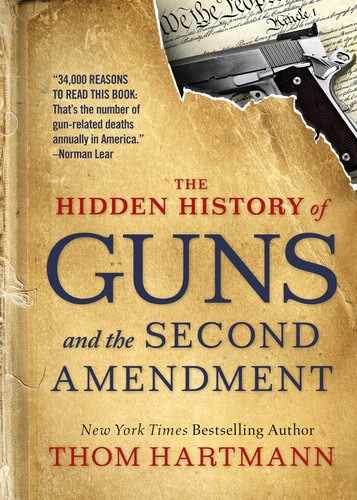CHAPTER 8
How Slavery Laid the Foundation of the Second Amendment
I think slavery is the next thing to hell.
-Harriet Tubman to Benjamin Drew, St. Catharines, Ontario, Canada, 1855
Europeans used guns and formed loose militias to wage a genocidal war against the once-thriving Native American population in North America. Militias in the South at first served the same role, but as the American frontier pushed westward, the role of local militias shifted.
By the mid-18th century, rich plantation owners located east of the Appalachian frontier were generally protected by the British military, which enforced the treaties between Native American tribes and the British empire.
As a result, white men in the South soon served in militias for a very different purpose. Rather than keeping Native Americans out of the plantations, the militias were deployed to keep African slaves on the plantations—or to return any who may have escaped. These militias were known as “slave patrols,” and they were well regulated by the slave states.
In Georgia, for example, a generation before the American Revolution, the colonial government passed laws in 1755 and 1757 that required all plantation owners or their white male employees to be members of the Georgia militia and those armed militia members to make monthly inspections of the quarters of all slaves in the state. The law defined which counties had which armed militias and even required armed militia members to keep a keen eye out for slaves who might be planning uprisings.
As Carl T. Bogus wrote for the University of California, Davis, Law Review in 1998, “The Georgia statutes required patrols, under the direction of commissioned militia officers, to examine every plantation each month and authorized them to search ‘all Negro Houses for offensive Weapons and Ammunition’ and to apprehend and give twenty lashes to any slave found outside plantation grounds.”1
It’s the answer to the question posed by the character played by Leonardo DiCaprio in Django Unchained when he asks, “Why don’t they just rise up and kill the whites?” If the movie were real, it would have been a purely rhetorical question, because every southerner of the era knew the simple answer: well-regulated militias kept the slaves in chains.
Sally E. Hadden, in her book Slave Patrols: Law and Violence in Virginia and the Carolinas, writes, “Although eligibility for the militia seemed all-encompassing, not every middle-aged white male Virginian or Carolinian became a slave patroller.” There were exemptions so that “men in critical professions,” like judges, legislators, and students, could stay at their work.2
Generally, though, she documents how most southern men between 18 and 45—including physicians and ministers—had to serve on slave patrol in the militia at one time or another in their lives.
And slave rebellions were keeping the slave patrols busy.
By the time the Constitution was ratified, hundreds of substantial slave uprisings had occurred across the South. Blacks outnumbered whites in large areas, and the state militias were used to both prevent and put down slave uprisings. Slavery can exist only in the context of a police state, and the enforcement of that police state was the explicit job of the gun-toting slave-patrol militias.3
